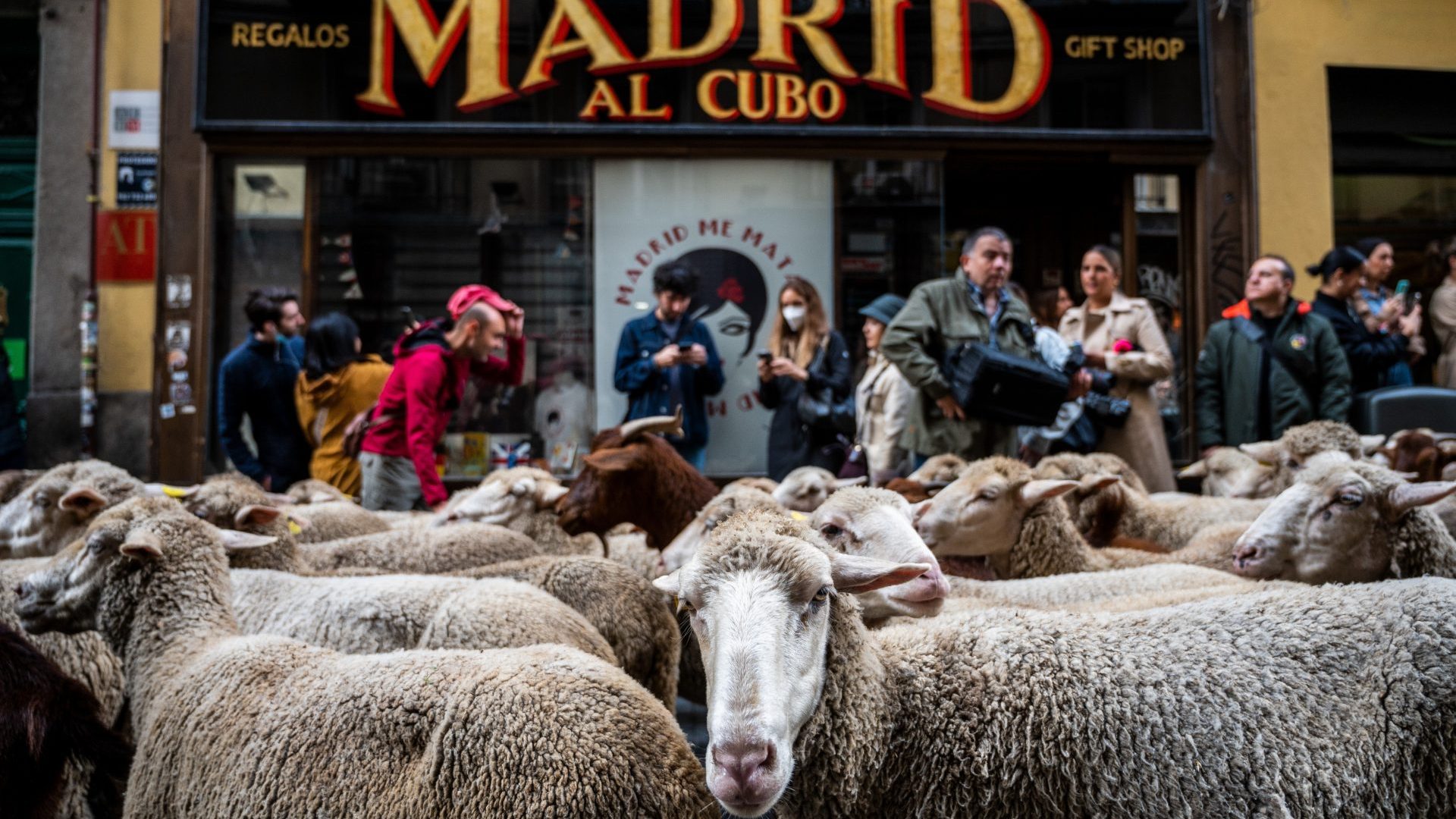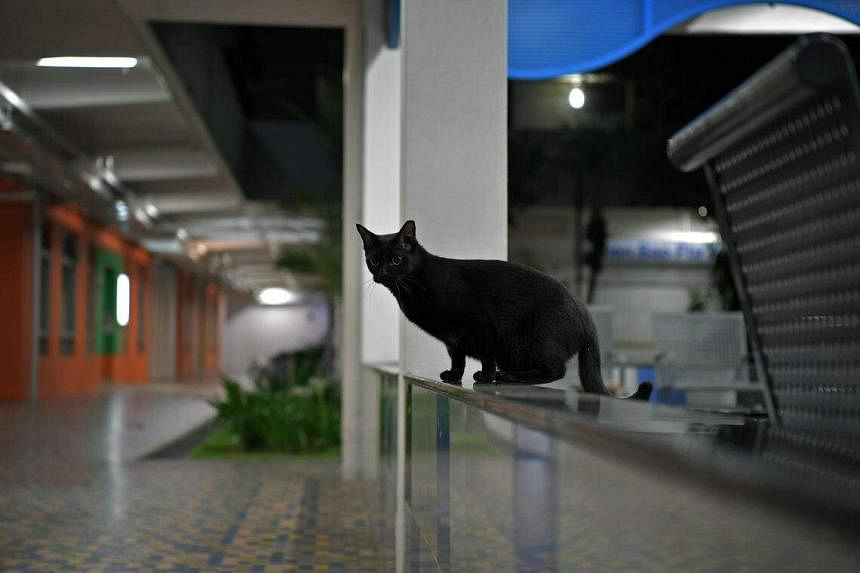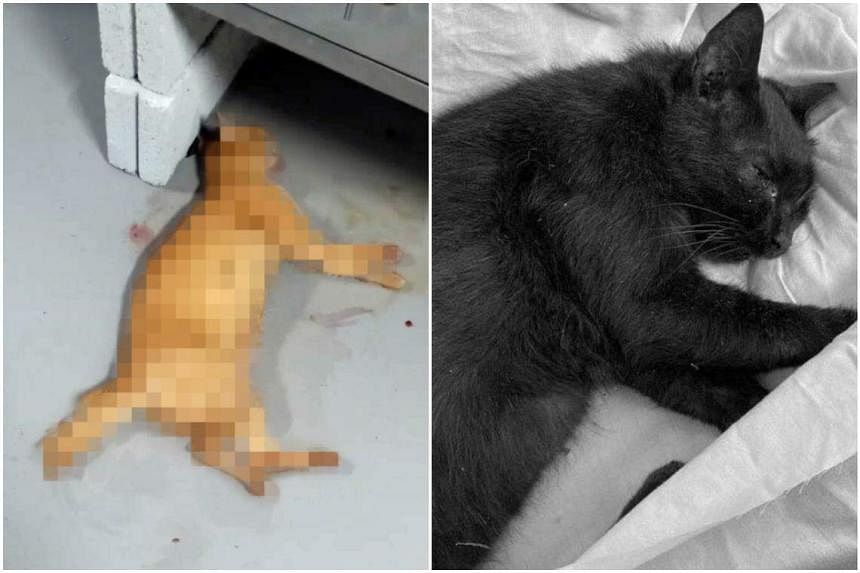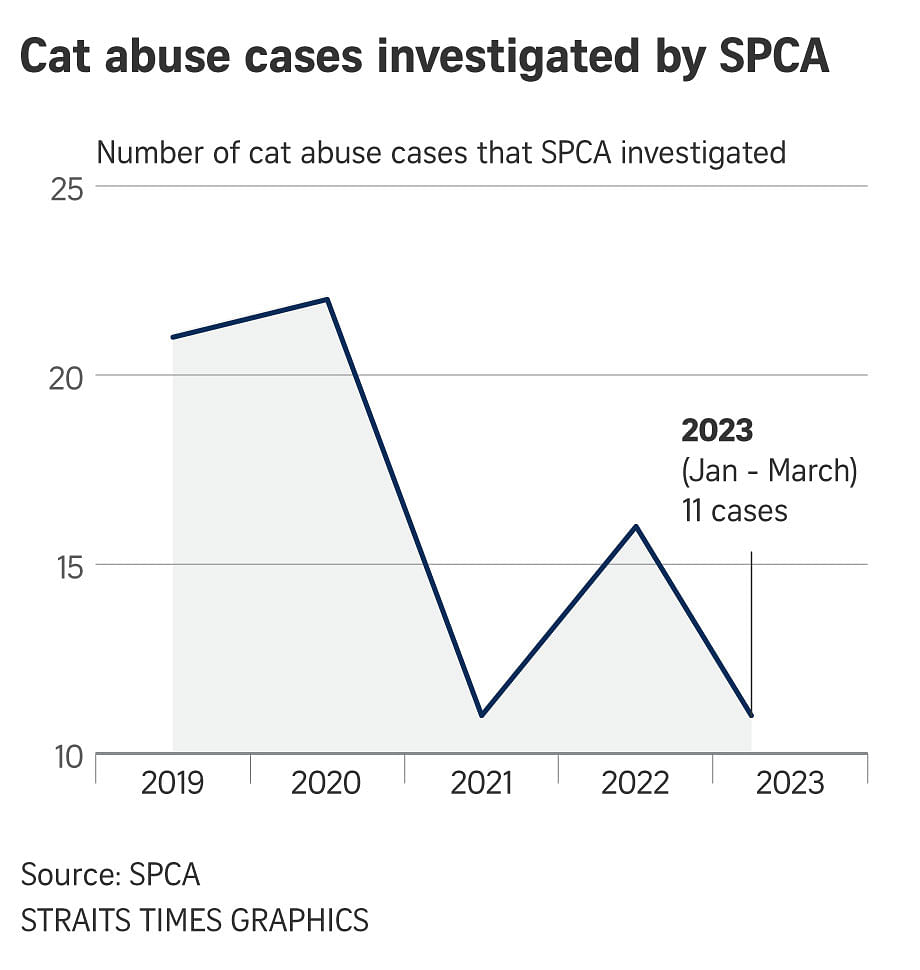New technologies and a lack patriotism in Silicon Valley are leveling the playing field for Russia and China.

Photographer: Saul Loeb/AFP/Getty Images
By Max Hastings
April 29, 2023
What a month this has been for secrets! Or rather, for no-longer-secrets. Ukraine is not winning its war, thinks the US military. Egypt planned to send rockets to Russia. Russia’s Wagner Group mercenaries tried to buy arms from Turkey through Mali. The US has penetrated Russian intelligence services.
These are just a few of the delicious tidbits allegedly exposed by 21-year-old Air National Guardsman Jack Teixeira, apparently from a Pentagon treasure trove.
If we sit down and think about these revelations, almost none comes as a surprise to those of us who study defense and foreign affairs. Everybody knows that almost all nations spy on their friends as well as on their enemies. For many moons there has been informed speculation about the stuff showcased in the leaks. The real damage derives from their authoritative sourcing to Washington — to America’s 18 intelligence agencies, nine of them within the Department of Defense.
“Scandals” of this kind make headlines with monotonous regularity. The successes of intelligence agencies remain hidden from our gaze for years if not decades. The failures, however, fill whole books within months. As a student of warfare, I long ago concluded that while intelligence is a vital tool of national security, the activities of all secret services vacillate between deadly gravity and farce.
Quite a few senior spymasters go mad, as did James Jesus Angleton, the Central Intelligence Agency’s counterintelligence chief who convinced himself in the 1960s and 1970s that Western agencies were riddled with traitors. Meanwhile, the CIA’s operations against Cuban leader Fidel Castro were unfailingly foolish and unsuccessful.
The agency has always attracted more than its rightful share of cowboys. One day in 1972, I found myself stuck with a BBC camera crew at Pakse in Laos, when a communist offensive was launched. Out on the town’s airfield, I spotted three obvious Americans in jeans and sweatshirts, carrying rucksacks and M16 rifles.
I asked them when the rumored “round-eye” evacuation flight would be coming in. They ignored me, looking studiously at the horizon until, at my third time of begging for information intended to save our frightened British necks, one man muttered between clenched teeth: “We don’t exist. We’re not here.”
They were spooks, of course, behaving with a childishness that was pretty common in Indochina in those days, matched by ruthless carelessness with local people’s lives.
Amy Zegart of Stanford’s Hoover Institution is an expert on US intelligence and author of the excellent recent book, “Spies, Lies and Algorithms.” (She recently did a Q&A with my Bloomberg Opinion colleague Tobin Harshaw.) She argues that the nature of spycraft is changing dramatically. The days of the cowboys, which started with the World War II Office of Strategic Services created by “Wild Bill” Donovan, are numbered. If Western intelligence, and above all counterintelligence, is to perform its critical role in Western defense, it must keep pace with the revolution, match new threats.
We in the Western democracies enjoy the huge privilege of living in open societies, as Chinese, Russian, North Korean and Iranian people do not. But part of the price of our freedom is that we are more vulnerable to attack, especially by foreign intelligence services.
Before, during and after World War II, Soviet agents operating freely in the US were able to recruit some 200 American informants, some of them deep inside government and the scientific community. Federal Bureau of Investigation director J. Edgar Hoover built a legend around the alleged prowess of his bureau (and himself), but in truth the Feds were slow to catch communist traitors. Many went unidentified for years.
In more recent times, cash has inspired treason more often than ideology. The FBI handed $7 million to an ex-KGB man who provided the information that, in 2001, belatedly unmasked the long-serving Moscow informant Robert Hanssen. The Russians paid $4.6 million to Aldrich Ames, a CIA case officer finally exposed in 1994, who provided them with information that enabled them to arrest and execute at least 10 American sources inside Russia.
As late as 2007, the US intelligence community’s annual threat assessment did not even mention cyberwarfare. Today, of course, it is recognized as central to security, and both the Chinese and Russians are good at it. The transfer, and thus theft, of secrets has been made far easier by the migration of information from paper to computers.
Most corporations and some elements of national defense are appallingly vulnerable, because of lax electronic data security, highlighted by the Russians’ 2020 SolarWinds hack of Washington systems. Zegart asserts that almost every Chinese weapons system has been created from stolen American technology, which former US cyberwarfare chief Keith Alexander branded bitterly as “the greatest transfer of wealth in history.”
It is ironic that the Chinese secured vital technical data on the F-35 and F-22 jets at a time when allies including Britain were struggling to secure Washington’s approval for access to the codes necessary to operate the aircraft, which they were then purchasing from the US.
Zegart raises the specter that before long, quantum computing may make possible the unravelling of all encrypted data. Sure, the West will be able to exploit this. Our enemies are likely to do even better, however, because we have many more high-tech secrets worth stealing.
It was once the case that intelligence gathering, and especially aerial surveillance, were monopolies of governments. Today, almost anybody can play. Small commercial satellites provide information that allows civilian intelligence geeks to unravel extraordinary secrets. A satellite image of an earth landscape that a few years back sold for $4,000 is now available for $10.
Meanwhile, a college student exploited publicly accessible facial recognition technology to identify most of the “Faces of the Riot” — the people who sought to storm the Capitol on behalf of President Donald Trump in January 2021.
Only around a quarter of all material in intelligence reports derives from secret sources. The intelligence community — or IC — needs to exploit open sources and integrate civilian talent into its processes much more energetically. The risk must be recognized that some civilian whistle-blowers and wannabe investigators will pursue conspiracy theories and peddle false information. But others bring to the party real assets, especially their own brains and insights.
Where once spies were obliged to enter a foreign country to steal its secrets, today not only states but nonstate actors can wreak untold harm through hacking and cyberattacks without venturing beyond their own front doors.
No American or Israeli hacker set foot in Iran in 2010 in order to insert the deadly Stuxnet worm in Tehran’s nuclear program’s computers, wrecking centrifuges and setting back Iranian weaponization by a year. Selfies taken by Russian soldiers in Ukraine have proved invaluable in creating order-of-battle intelligence about President Vladimir Putin’s invading army.
As globally available information doubles every two years, technology shows itself increasingly more potent than human analysts, even before artificial intelligence kicks in. Machines can identify Chinese missile sites on satellite images more quickly than human analysts.
A small army of Russian hackers, often authorized and funded by the Kremlin but mostly outside the government intelligence organizations, makes constant attacks on Western interests. Former CIA Deputy Director David Cohen said of the Russian online disinformation campaign in the 2016 US presidential election: “They wanted Donald Trump to win, they wanted Hillary to lose, but most of all they just wanted to f*** with us.”
Zegart believes that American dominance of the information and technology universe is under severe threat, which can only grow greater: “The intelligence playing field is leveling, and not in a good way.”
Among her sensible prescriptions, perhaps the most important is for greater integration between the IC and American business, especially technology companies. Yet the tech giants often recoil from cooperation with government, and especially with its intelligence agencies. In times gone by, in the world wars and the Cold War, government officials routinely sought the aid of big corporations, and got it. Today, patriotism has atrophied.
Facebook professes to regret its past failures, and expresses a commitment to serve the public interest. But behind closed doors, says Zegart, it seeks “to deny, delay and deflect regulation and stifle critics.” Google canceled an artificial intelligence partnership with the Pentagon in 2018 after a protest by more than 3,000 employees.
Susan Gordon, an intelligence veteran, observes that Google, Apple and Facebook are huge players in the cyber universe, but seem accountable to no one. She, like Zegart, argues that all the tech companies must accept their share of responsibility for US national security.
Now that cyberattacks have become a routine part of the 21st century, the West is obliged to defend itself daily. The National Security Agency reportedly employs more mathematicians than any other organization in the US. Spies, or rather intelligence organizations, have unwillingly gotten dragged into warfighting, especially the electronic kind.
I wish that I could share Zegart’s expressed belief that CIA analysts are people of “exceptional intellectual skills.” Intelligence organizations, like the rest of us, are lousy at predicting the future, rather than merely describing the present and past. She quotes Phil Tetlock of the University of Pennsylvania, who studies the track records of modern prophets, and who observes acidly that “the average expert was about as accurate as a dart-throwing chimpanzee.”
Some of the chimpanzees serve at CIA headquarters in Langley, Virginia. Several of their failures have been catastrophic, most spectacularly the 2002 claim that Saddam Hussein possessed weapons of mass destruction, which triggered President George W. Bush’s Iraq war.
It has always seemed to me an intractable problem that whereas in World War II, intelligence could recruit some of the most brilliant civilians in American and British society, in modern peacetime it is much tougher to get the best and brightest to accept relatively ill-rewarded government jobs.
Public service is unfashionable, on both sides of the Atlantic. Some spooks are indeed smart, but others are not. It should be a source of concern that the vast Chinese and Russian intelligence and especially cyberwarfare communities may have access to some cleverer people than their Western counterparts.
Zegart highlights another grave challenge facing intelligence services — a decline in public trust, partly fed by the West’s enemies through deepfakes, social media and disinformation, but also fueled by some prominent Americans. It was an extraordinary moment when Trump, as president, declared that he trusted Putin’s denials of Russian interference in the 2016 election more than he trusted his own nation’s intelligence services.
Trump appeared dismissive of the activities of, for instance, the Heart of Texas and United Muslims of America Facebook accounts, created by the Russian Internet Research Agency, the former peddling the slogan “Time To Secede.”
In a new Foreign Affairs piece, Lawrence Norden and Derek Tisler of the Brennan Center for Justice highlight the critical role in defending American democracy of the Cybersecurity and Infrastructure Security Agency’s “Rumor vs. Reality” resource, colloquially known as “rumor control.” This provides factual information to dispel some of the commonest election conspiracy theories.
Several states, including Connecticut, Kentucky and Ohio, have established rumor control notice boards, providing factual information to voters and explaining the multiple safeguards against election fraud. In the new world, measures such as this provide reinforcement for the defenses manned by the intelligence agencies. They are needed not merely to validate US domestic processes, but also wild foreign- and home-generated fake news reports.
Zegart expresses concern about the image of intelligence projected by Hollywood’s movie and TV output, which emphasizes torture, treachery and assassination. Those play only the most marginal roles in the IC’s real-life activities. Yet I was troubled to receive a letter a few months ago from a former British spymaster commenting on a newspaper article I had written, in which I asserted that information secured by torture is seldom reliable.
On the contrary, claimed my acquaintance laconically: torture works; often produces valuable results. Well, maybe. But it alarmed me that he had no compunction about expressing this view in writing, above his own signature.
I am also bothered, as Zegart seems not to be, by the dilemmas posed by drone assassinations in far-flung places. Sure, most of those whom the CIA-directed drone crews kill are enemies of freedom, murderous fanatics. But what happens when our enemies start playing this game with our people, perhaps our prime ministers and presidents?
Drones are frighteningly available, for relatively tiny sums of money. They are likely to become terrorist tools of choice.
Amy Zegart’s book performs an important service by highlighting the need for the intelligence services to update their outlook, personnel and operations to face the new world, and especially the cyberworld.
Meanwhile, Jack Texeira’s alleged superleak reminds us that intelligence and covert activities — “edgy things,” as former CIA director Michael Hayden calls them — are huge business both for the good guys and the bad ones. The other side is getting better at them all the time. We need to do the same, even if some of the nasty bits make us feel queasy.
Follow the authors

Max Hastings is a Bloomberg Opinion columnist. A former editor in chief of the Daily Telegraph and the London Evening Standard, he is author, most recently, of "The Abyss: Nuclear Crisis Cuba 1962."












:quality(70)/cloudfront-eu-central-1.images.arcpublishing.com/thenational/235UI3G2YU74CQAA7Y2TYBVJUU.jpg)
:quality(70)/cloudfront-eu-central-1.images.arcpublishing.com/thenational/CZI23X2ZGJQVUTSWGFP7TVRDQ4.jpg)
:quality(70)/cloudfront-eu-central-1.images.arcpublishing.com/thenational/5YWTXTAOHMFXMLL6MXRJGK34LQ.jpg)
:quality(70)/cloudfront-eu-central-1.images.arcpublishing.com/thenational/VKZY6XST3U55EWXQKKDSGTMY3M.jpg)
:quality(70)/d27020bajtkr6c.cloudfront.net/04-30-2023/t_1c891df8a1eb4aefa44c0b803d17637f_name_RC2AO0AJ66FM)

















